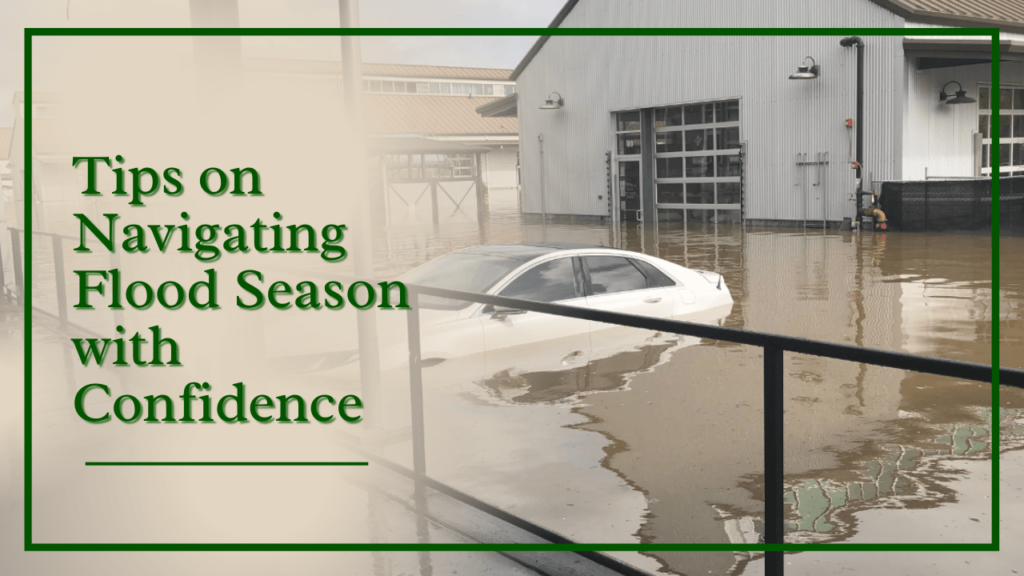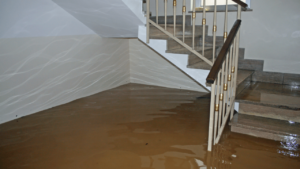
If you’ve lived for any length of time in California’s Russian River Valley in Sonoma County, you likely know that flood season is upon us. It generally runs from November through March. If you remember the rain storms that we endured earlier in 2023, you’ll want to make sure you’re prepared for flood season. As experts in the local real estate market, D & G Equity Management does everything we can to ensure that our owners, our residents, and the properties we manage are ready to face whatever storms Mother Nature delivers.
As you prepare yourself and your property for a flood, we want to provide you with the necessary resources and support to weather the storm well.
If you’re a new property owner in our area or your rental home is occupied by a resident who has not yet experienced a flood, it’s important to understand what could happen and how best to react. Nobody likes to think about the possibility of your property being destroyed, but it’s important not to be taken completely by surprise when a flood rolls through town.
In addition to property damage, floods can also cause loss of rental income. If your rental property is temporarily uninhabitable due to flooding, you may lose out on the rental income you would be earning while repairs are being made.
We’re talking to both tenants and owners today: Be prepared for worst-case-scenarios from possible floods and take every precaution to get ahead of a major rain event – even if it seems extreme.
What Does Flood Season Look Like in Our Area of Sonoma County?
We’re located near the lower Russian River, and that means there’s a chance for flooding, especially in the late fall and throughout the winter. During this rainy season, we can experience heavy rains, falling debris, high water levels, and lots of mud.
Two bridges are gauged to determine the chances of flooding: the Guerneville Bridge and the Hacienda Bridge. Depending on where you live, you may want to watch the water levels at those bridges closely. We like to use information from the California Data Exchange Center, which provides a live reading of the river’s levels and lets us know when flood danger is imminent. Also helpful are the Russian River Forecast Center and the Sonoma Water Flood Forecast.
Invest in Flood Insurance for Your Property
We strongly recommend that if your rental property is in a flood zone or even a potential flood zone, that you obtain flood insurance to protect yourself and your investment. Floods can cause significant damage to your property, and without proper preparation and insurance coverage, it can also be financially crippling.
-
Standard Insurance Policies Don’t Cover Floods
Most standard homeowner’s insurance policies that you buy as a landlord in Sonoma County don’t cover damage caused by floods. This means that if your property is damaged due to flooding, you may have to pay out of pocket for repairs. This can be financially devastating for rental property owners, especially if you own multiple properties. Flood insurance provides the necessary coverage to help you recover from damage and destruction.
Your tenant’s belongings aren’t covered for flood damage, either. Tenants must obtain their own insurance policy for their personal property.
Having flood insurance can provide rental property owners with peace of mind. Knowing that you have adequate coverage in case of a flood can alleviate the stress and worry that come with owning rental properties in a flood-prone area. While you hope to never have to use your flood insurance, it’s always better to have it than not have it.
How to Prepare for a Potential Flood
When you own a rental property that is in a flood zone or is in danger of flooding, we have some tips and information that may help make your preparation more manageable. Most of this should also be shared with your tenants, so they understand how to best protect themselves in the event that they’re in your home during a flood.
- You might have a property that’s safe from flooding, but the home is located in an area where the grounds and roads are subject to flooding. In that case, make sure that your tenants move their vehicles to higher ground.
- Prepare for potential utility outages. You’ll want to have batteries for flashlights and candles available.
- Stock up on non-perishable foods. We recommend at least a week’s worth of food that doesn’t have to be frozen, refrigerated, or cooked.
- Don’t forget pets! You’ll want to be sure they have enough food and water to get through any emergency.
- If you’re going to use a generator, make sure you do it safely and have enough propane to run for at least a week.
- Keep your electronics fully charged so you aren’t cut off from communicating with friends, tenants, and emergency personnel.
- Let family and friends know where you are and whether you need help.
- Check in on vulnerable neighbors.
Remember to avoid driving in floodwaters at any time as this can potentially lead to drowning!!
It’s important that you have up-to-date contact information for the fire department, police department, California Highway Patrol, and local hospitals and shelters. Keep in touch with your tenants and make sure they’re okay. If you are working with a professional property management company in Sonoma County, stay in touch with them, too.
What to Do if You Have to Evacuate
When your home is subject to flooding, there are some immediate steps that you’ll have to take, especially if you’re ordered to leave the home or if you begin to sense that sheltering in place is too risky. Whether you’re the owner of the property or a tenant who is renting it, be prepared with a plan.
First, reserve a U-Haul truck or moving truck in advance. You’ll find that as the floodwaters rise, there’s a huge shortage of moving trucks, vans, and other large vehicles that may be needed. Have a truck waiting for you and load it up with anything you could not stand to lose.
Pack all of your valuables and personal belongings that are essential. This might include important papers and documents that you might need, such as your identification, social security card, passport, and other information. You’ll want to include the deed to your house, insurance policies, and any important photos or heirlooms that cannot be replaced.
Don’t forget to keep your medications safe. You’ll want your car and house keys, your wallet, and your credit cards. Pack your charging cables and all the electronic devices you cannot be without, such as phones and laptops. Charge everything fully while you’re packing and preparing.
Secure your pets and prepare them for evacuation. They’ll be stressed, so don’t forget a favorite toy, some treats, and plenty of food and water as well as any medications they may need.
Empty your refrigerator and clean out any food that you’re able to take with you. Before you leave your property, turn off all lights and your heaters. Turn off the gas and the main electric breaker.
Let your property manager know that you are leaving the area. If you have tenants, tell them that you’re evacuating and where you’ll be. If you are a tenant, talk to your landlord or property manager. Let them know that you’re evacuating for your own safety and inform them about what you’ve done to secure and protect the property.
After the Flood: Returning to Your Home
 When it’s safe to return to your property after a flood, there are immediate steps you should take.
When it’s safe to return to your property after a flood, there are immediate steps you should take.
It’s vital that within 48 hours of returning, you remove any of your now drenched personal belongings that were left behind. If the property has, in fact, flooded, you’ll want to get everything out. The mud that a flood leaves behind can destroy a home permanently. Water remains inside the walls and mold can quickly develop.
If you’re going inside the property, you’ll need gloves, masks, protective boots, and hazardous materials (HazMat) suits. Contact your landlord, your property management company, and your flood insurance agent. Take as many photos as you can and itemize the property that has been destroyed or lost.
The process of repairing your property will include removing carpet, installing new drywall and sheetrock, replacing the insulation, and updating everything from doors to windows to floors. Depending on the water level in the building or the house, you may have to replace walls entirely.
During the repair process, you’ll want to keep windows open for proper ventilation. Industrial fans will help to keep the air circulating and prevent mildew, rot, and mold. If the exterior of the property was flooded but the inside remained untouched, pressure wash the exterior and the sidewalks and any patios.
You’ll need a licensed contractor for the repairs, and your flood insurance company will send adjusters and analysts to examine the damage. You’ll want to follow their process for all repairs. If the area is declared a National Disaster, you have resources to tap into, such as FEMA.
If a disaster strikes, you’ll want to lean on a professional and experienced partner. When it comes to Sonoma County property management companies, we’re one of the best. Contact our team at D & G Equity Management.
